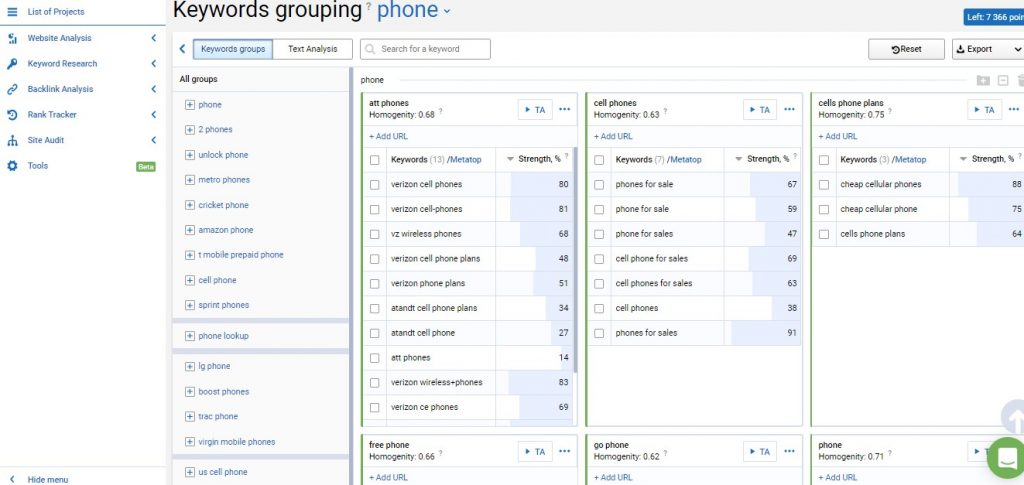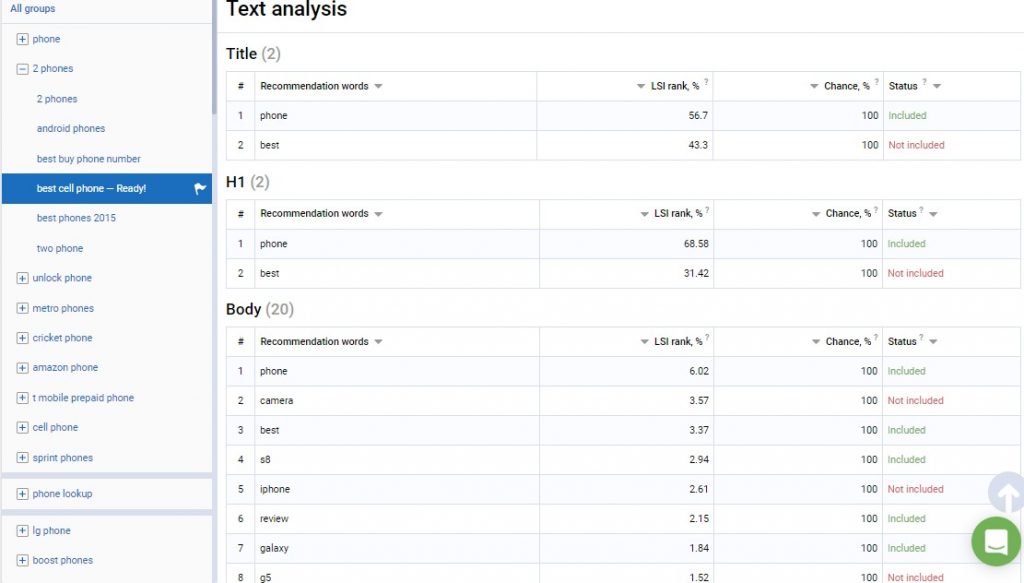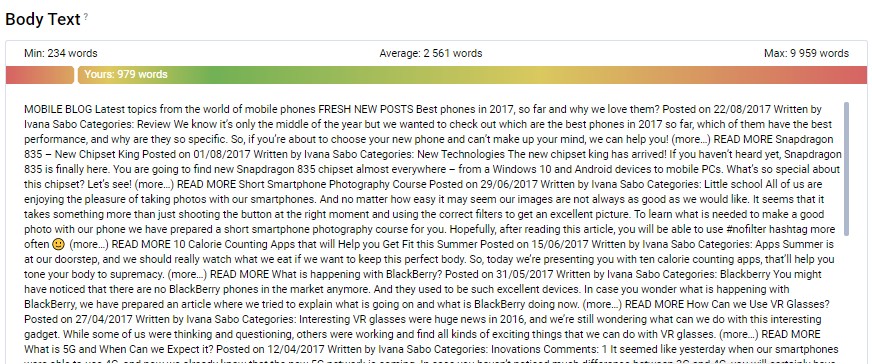Creating a task for copywriters is always a pain. Good writers ask a lot of questions. Other simply make a ton of mistakes. The biggest question of all time is how to write clear guidelines and be understood without any problems?
In this article, I’d like to answer this question. The answer is: it’s impossible.
Of course, there always will be people who think differently from you. Questions and misunderstandings are normal. I’m just going to suggest few recommendations and lifehacks on how to minimize it. Let’s see.
The crucial points
Before getting to the technical requirements, we need to point out goals as clear as possible and make sure to explain it to the copywriter. Follow these steps:
- Create a list of the strong points of your product / service / company and provide copywriter with this information. You know your product better than an external writer so that this small step would save a bunch of time.
- Point the goals of the text: if it’s informative text or advertising. It can be whatever you want, just say about it at the very beginning. What do you want to get from the reader? Registration, selling, share, comment.
- Describe the style: official, humorous, casual, mixed. It can be unnecessary if you provide the link to the resource where it will be published. The good writers always explore the previous posts to write appropriate content. But it won’t harm to remind about it.
- Tell everything you know about your audience. Who will read the article? This information matters as to choosing writing style and what leverages to use.
- Create a text structure. You might think that it’s not your work. And maybe you’re right. But in fact, creating a plan is much easier than you think and would save you from writing edits in future.
- Write the list of questions article should answer.
- Set the bans: what exactly you don’t want to see in this text.
- Tell how this post should differ from the other posts which already exist in the SERP by your main query.
Only after that, we can speak about basic requirements. Of course, sometimes you don’t have to follow all these steps, especially if you’ve worked with this writer earlier. But if it’s you first cooperation with the new person, all these information is necessary to understand each other.
Technical requirements
The main thing to remember working on this part — be as accurate as possible. Do not use “about 12 words”, “more than 2 times”, “perfect title” etc. Write exactly what you need and avoid subjective phrases. What to include:
- Number of words in the title;
- Number of words in the sentences and paragraphs;
- Number of sub headings;
- Number of words of the whole article;
- Keywords and its frequency;
- Meta tags template (if necessary);
- Uniqueness and what tools you use to check it;
- Information on images, bulleted lists, spreadsheets, graphs;
- Links to use in the article.
This list can differ depending on your purposes but it’s general information all writers should see before the beginning of work.
When you got used to each other, and your writers know all your requirements, you can send tasks using such a simple spreadsheets:

But it’s after a while. For the first times, you have to provide a ton of information.
Example of the good-written task
Topic: how to choose best cell phone plan
Site: http://www.mobileshop.eu/blog/
Audience: men and women from 20 to 40 years.
Article structure:
- Lead – About established providers
- Best cell phone plan for the average user
- Best family cell phone plan
- Best unlimited data plan
- Basic cell phone plan
- Best prepaid cell phone plan
- Conclusions
Article volume: 2000 symbols
Keywords: phone, cell, plan, compare, money (and 10 more)
Proofreading and uniqueness: Grammarly, SmallSEOTools
Style: casual
Goal: hidden advertising, interlinking.
Questions: What are the plans and providers? What kind of plan suits me?
What I want to see
- A clear and short title (5-7 words);
- A catching lead in (1 paragraph) — start with the personal experience or question. Article always should have problem and the solving;
- 1-3 subtitles;
- Paragraph — 6 sentences or less;
- Sentence — 15-20 words;
- 1 image, 5 screenshots;
- 1-2 bulleted list;
- Space between paragraphs, lines in the list;
- All the keywords are used one time in different parts of the text;
- 3 links to: (links) – inserted naturally;
- Uniqueness 80-95%;
- Self-revision, check yourself for grammatical and stylistic mistakes.
What I don’t want to see:
- Vacuity, time markers, introductory phrases;
- Keyword spamming;
- Complex terminology;
- Explicit advertising, CTA;
- Uniqueness 100%;
- Straight text, too long paragraph and sentences;
- Rewriting.
That’s it. Of course, it’s just an example, and it can be incomplete, but I think you’ve caught the idea.
Bonus: how to find keywords for the article
Selecting keywords for the certain post usually takes a while, but there are some ways to minimize it. You can use SEO tools for this purpose. I’ll use Serpstat text analytics tool to do it. It can collect keywords for your article and save you a bunch of time.
How?
Serpstat analyzes the page content of URLs from SERP top-10 for researched keywords and provides recommendations on what keywords you might want to use in Title, H1 and Body sections of your page. Let’s try it.
Open tool “section” at Serpstat and choose Grouping and Text analytics.

Then insert your project name, link to your website (optional) and add your list of the keywords you’ve gathered earlier. (from csv file or manually).
Finally, choose the region, search engine, linkage strength, type of grouping and click “finish”.
The last two parameters depend on how wide your topic is:
Weak — keywords must have at least 3 common URLs in Top 30 search results for a keyword;
Strong — at least 7 common URLs;
Soft — cluster can be created if at least one pair of keywords have 3 or 7 common URLs;
Hard — all keywords in a cluster must have 3 or 7 common URLs.
After that, you’ll get the list of clusters — semantically grouped keywords.

Choose the needed group (“best cell phone”, for instance), and start text analytics. You’ll see such report:

Now you can just export it and send it to your copywriter. It’s recommended keywords for the certain part of the page. You’re free not to use all of them or change the form of the word. Anyway, you have all needed information to optimize your article.
And the last block contains text found on the target page. Serpstat analyzes the text volume and gives recommendations to increase or decrease the amount of text.

That’s all. Of course, it’s all just information to think out and analyze. It’s not the step-by-step instruction. But if you use it right, it can save your time significantly.
Final thoughts
Don’t be afraid to flood them with all this information. Even on this stage, you can understand if you want to work with this person. If it’s too busy for the copywriter to read 3 pages of information, imagine the quality of the content he writes. So, my point is:
- Make sure copywriter understands the sense of the task, not only basic requirements.
- Be as accurate as possible;
- Automate your work (gathering keywords with tools, write one ultimate guideline for all writers).
And I hope it’ll help you to spend less time on all these processes.







